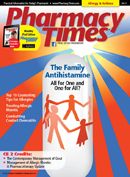New Technology Could Help Spot Adverse Reactions
Certain protocols and precautions, such as knowing an individual patient’s hypersensitivity or disease state, can help pharmacists reduce the likelihood that an adverse drug reaction (ADR) will occur. But predicting them with any certainty or consistency is nearly impossible.
A team of researchers at the University of Medicine and Dentistry of New Jersey set out to tackle that barrier using a mathematical model that mimics the human biological neural network. They “trained” the model by feeding it data on known pharmaceuticals and associated ADRs collected through the FDA’s adverse event reporting system.
In an article on the trial, published in the March 2011 issue of the International Journal of Medical Engineering and Informatics, the scientists reported that their model, called an artificial neural network, was 99.87% accurate in predicting ADRs overall and 100% accurate in predicting nonserious ADRs in 10,000 observations.
The authors said the technology’s ability to quickly predict adverse drug reactions before they occur has potential to save both lives and health care dollars. They are currently training the neural network with a larger data set of 10,000 drug molecules and associated ADRs in order to refine its predictions.

